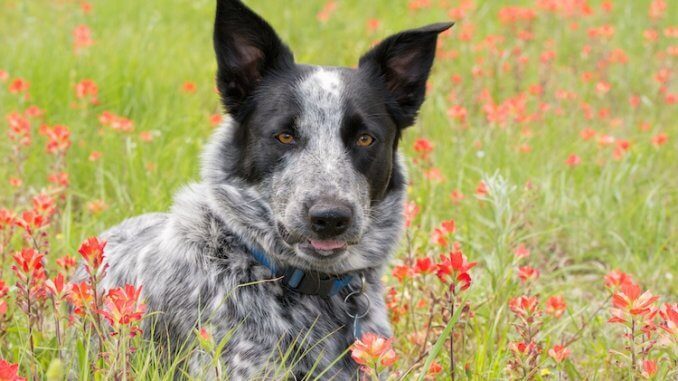
Did you know that the Texas Heeler isn’t a breed formally recognized by major kennel clubs but has still won the hearts of countless families? This lively mix, typically combining Australian Shepherd and Australian Cattle Dog genetics, brings energy and smarts to any household.
I’ve seen many families searching for a breed that can keep up with their active lifestyle while being loving and gentle around children. Enter the Texas Heeler. Known for its agility and intelligence, this breed thrives in environments where it can use its high energy levels. Whether it’s hiking through the woods, playing fetch in the backyard, or simply being a jogging companion, the Texas Heeler is always up for an adventure.
But it’s not all about play. Texas Heelers are deeply loyal and form strong bonds with their families. Their keen instincts and alertness also make them excellent watchdogs. Texas Heelers can be a wonderful addition to any family for those with the time and space to match their energy. Let’s dive into what makes this breed so special and why it’s quickly becoming a popular choice for families seeking a dog full of love and energy.
TABLE OF CONTENTS
- Texas Heeler Quick Breed Summary
- Unveiling the Texas Heeler: Origins and Development
- The Physical Characteristics of the Texas Heeler
- Personality: A Blend of Loyalty, Energy, and Intelligence
- Texas Heeler Care: Tips for a Happy and Healthy Companion
- Common Health Issues in Texas Heelers
- The Cost of Owning a Texas Heeler
- FAQs about Texas Heeler
- So, Is the Texas Heeler Right for You?
Texas Heeler Quick Breed Summary
Unveiling the Texas Heeler: Origins and Development
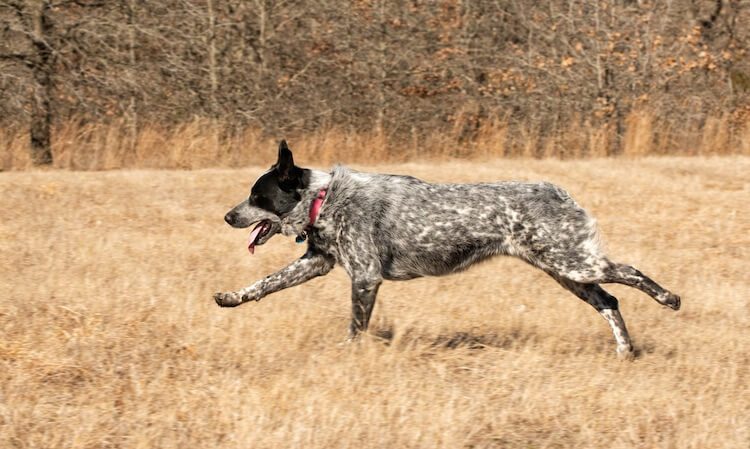
The Texas Heeler’s origins trace back to the heart of the United States, where ranchers needed a versatile and hardworking herding dog to work in varied climates and terrains. Major kennel clubs don’t recognize this breed because it’s a hybrid, but it’s increasingly popular due to its agility, intelligence, and adaptability. It emerged as a crossbreed that could meet the unique demands of herding and guarding livestock in the challenging conditions of Texas.
Parentage
The Texas Heeler mixes two notable breeds: the Australian Shepherd and the Australian Cattle Dog.
- Australian Shepherd: Despite its name, this breed was developed to work as a herding dog in the United States. It is known for its intelligence, high energy, and ability to work in diverse environments. The Australian Shepherd is recognized for its stunning merle coat, alert expression, and dedication to tasks, making it a popular choice for many families and farmers.
- Australian Cattle Dog: This breed — also known as “Red Heeler” or “Blue Heeler“, depending on its color — hails from Australia and was bred for herding cattle in harsh conditions. Known for its endurance and strength, the Australian Cattle Dog is also highly intelligent and protective. The breed’s resilience and work ethic have made it a beloved companion for those needing a hardworking herding dog.
Their unusual name comes from their origin and the Australian Shepherd dog nickname (Heeler). The Heeler nickname comes from their tendency to nip at the cattle’s heels to encourage the direction of their movement as this Australian Shepherd dog herds them.
There are two different types of Australian Shepherd dogs and so there are two different types of mixed-breed Heelers:
- The Original Cattle Dog, originating from New South Wales
- The Queensland Heelers, who are a variant in this line from the 1940s
Regardless of which cattle dog and Australian Shepherd dog, both are a Texas Heeler!
Development
The hybrid was developed to harness the best qualities of each parent breed: the loyalty and agility of the Australian Shepherd and the tenacity and stamina of the Australian Cattle Dog. Ranchers wanted a breed that could thrive in Texas’s demanding landscapes while offering the same keen herding instincts and intelligence. The result is the Texas Heeler, which combines these desirable traits in a loyal and energetic companion, perfect for working farms and active families alike.
Generations and Breeding of the Texas Heeler
Breeding Texas Heelers involves several generational variations to refine and establish the breed’s traits. The breeding process often begins with choosing between two variations of the parent breed, the Australian Cattle Dog, which includes both Original Cattle Dogs and Queensland Heelers. Here’s a breakdown of the generational variations of Texas Heelers:
- F1 Generation: The first generation was bred from a purebred Australian Cattle Dog and an Australian Shepherd. This generation combines the characteristics of each parent breed.
- F1B Generation: A first-generation (F1) Texas Heeler backcrossed with either a purebred Australian Cattle Dog or Australian Shepherd to enhance specific traits from one of the parent breeds.
- F2 Generation: The offspring of two F1 Texas Heelers, resulting in a second-generation hybrid. This cross can lead to more predictable traits as the genetic mix becomes more established.
- F3 Generation and Beyond: Each subsequent generation involves breeding Texas Heelers of the same generation (e.g., F2 x F2 to produce F3), leading to more consistency in appearance and temperament over time.
Breeders can create more predictable hybrids over generations by selecting breeding pairs with the desired traits. Consistent breeding aims to establish a stable pedigree status and achieve four generations of recognized lineage, which is needed to qualify for pedigree status by kennel clubs.
Recognition
While not officially recognized by the American Kennel Club or other major registries, the Texas Heeler has gained recognition from smaller hybrid and designer dog associations. Its popularity has grown primarily due to its temperament and adaptability, making it a well-suited pet for active families looking for a devoted and intelligent companion. The Texas Heeler has also gained a loyal following for its ability to transition seamlessly between being a hardworking farm hand and a beloved family pet, bridging the gap between the working and companion dog worlds.
The Physical Characteristics of the Texas Heeler
Size and Build
The Texas Heeler is a medium-sized dog with a strong and athletic build. Standing between 17 and 22 inches tall and weighing 25 and 50 pounds, these dogs exhibit a balance of strength and agility. Their build reflects their herding heritage, with muscular bodies well-suited for vigorous activity. Their lean frames enable them to move swiftly and with agility, ideal for their herding background.
Coat Type
The Texas Heeler’s coat is typically short to medium in length and can have a smooth or slightly rough texture. This type of coat requires minimal grooming, making it relatively low-maintenance. Despite its low grooming needs, the coat is dense enough to protect the dog from the elements, helping it adapt to various climates. Some individuals may inherit a longer, slightly wavy coat from their Australian Shepherd lineage, while others have shorter, sleeker coats typical of the Australian Cattle Dog.
Colors
Texas Heelers come in a variety of striking colors and patterns. Common colors include black, blue merle, red merle, and sometimes a mix of these shades. They may also have white or tan markings on their face, chest, and legs. The merle pattern, characterized by patches of lighter and darker colors, is often seen in this breed and adds to their unique and eye-catching appearance.
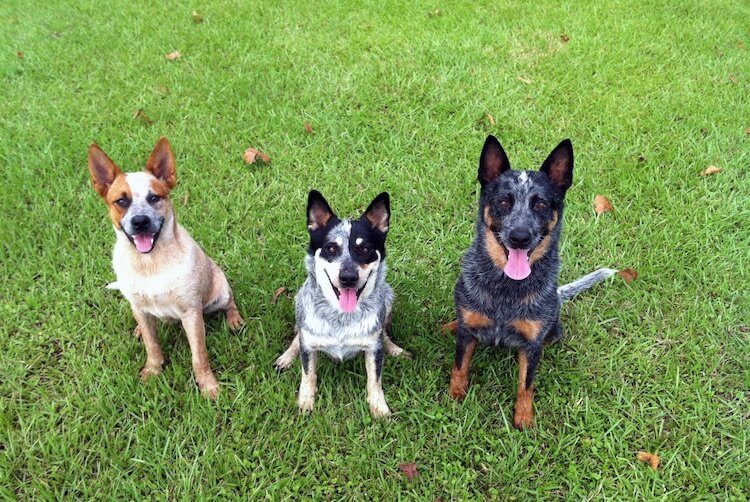
Other Distinct Appearance
Texas Heelers often inherit distinctive features from their parent breeds, such as the Australian Shepherd’s expressive eyes, which can range in color from brown to blue. They can also have erect or semi-pricked ears, which reflect their alert and attentive nature. Their tails vary from short to moderately long, and some may have a natural bobtail, a trait inherited from the Australian Shepherd. These distinctive physical characteristics make the Texas Heeler easily recognizable and visually appealing.
Personality: A Blend of Loyalty, Energy, and Intelligence
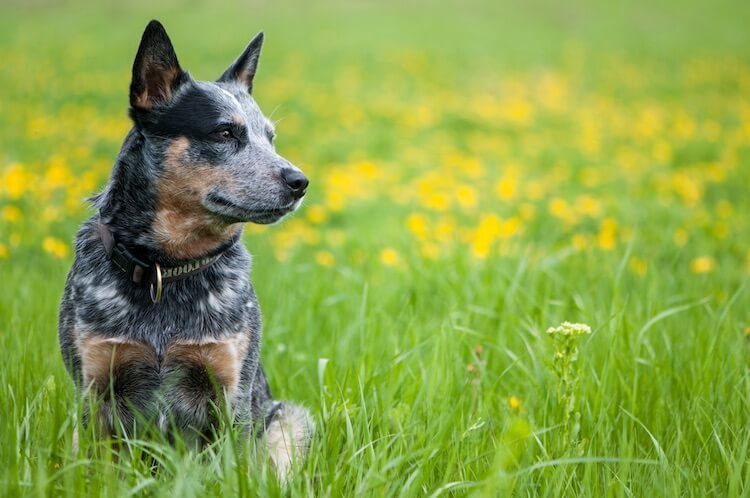
Personality and Temperament
The Texas Heeler’s personality is a delightful blend of intelligence, energy, and loyalty. These dogs inherit traits from the Australian Shepherd and the Australian Cattle Dog, making them highly alert, enthusiastic, and quick learners. Their herding heritage instills an instinct to work, which often translates to high energy levels and a need for mental stimulation. This makes them well-suited to active families or individuals who can provide ample exercise and engage them in activities that challenge their minds.
Protective and Affectionate
Texas Heelers have a protective streak, which makes them naturally inclined to guard their family and home. They tend to be reserved around strangers, making them excellent watchdogs. Despite this wariness toward unfamiliar faces, they are affectionate and warm with their families, forming strong bonds with those they trust. Their loyalty and dedication to their masters are unmatched, as they thrive on companionship and seek guidance from their owners.
Playful and Joyful
Beneath their hardworking demeanor, Texas Heelers have a playful and joyful side that shines through in their interactions with loved ones. They enjoy games, fetch, and agility exercises, which keep them physically active and mentally stimulated. Their joyful spirit makes them a wonderful companion for children and adults alike, as they can easily switch from work mode to play mode when the situation calls for it.
The Texas Heeler’s combination of intelligence, loyalty, and energy makes them a fantastic companion for those willing to match their activity levels. They thrive in homes where they are given plenty of opportunities to exercise, play, and stay engaged, and they repay their owners with boundless affection and unwavering loyalty.
This breed generally gets along well with children, especially if they are socialized from a young age and raised in a family environment. Their playful and energetic nature can make them great playmates for kids. However, due to their herding instincts, they might tend to try to herd small children. Supervising interactions between young children and the dog is important to ensure they interact safely. Teaching the dog and children appropriate behavior is key to fostering a positive relationship.
Texas Heeler Care: Tips for a Happy and Healthy Companion
Feeding
A balanced diet is essential to keeping your Texas Heeler healthy and energetic. It should be high in quality protein to support muscle development and energy needs. Depending on their age, size, and activity level, they typically need 1.5 to 2.5 cups of dry kibble daily, divided into two meals. Puppies and highly active adults may require more, while older dogs or those with lower energy needs may require less.
Monitor their weight and adjust feeding portions as needed. Providing fresh water daily is also crucial for their hydration, especially after vigorous activities. Consulting with your vet for specific dietary advice tailored to your dog’s needs can also help ensure optimal health.
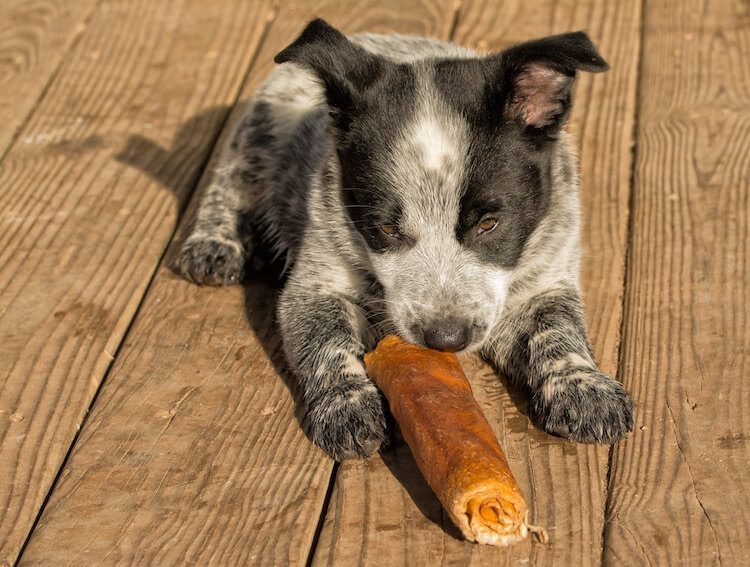
Grooming
Texas Heelers have a low-maintenance coat that requires minimal grooming. Weekly brushing usually keeps their fur clean and healthy, reducing shedding and preventing matting. Frequent brushing might be necessary to manage the extra fur during shedding seasons. Bathing should be done as needed, usually every few months or when they get filthy. Regular dental care, including brushing teeth or providing dental chews, can help prevent gum disease and maintain good oral hygiene.
To avoid potential health issues, it’s important to trim their nails every few weeks if they aren’t naturally worn down through regular exercise. Some dogs of this breed may be sensitive to touch, much like their Australian Cattle Dog parent, so establishing a grooming routine early on is essential. This will help your dog become accustomed to grooming, aid in socialization, and reduce its sensitivity over time.
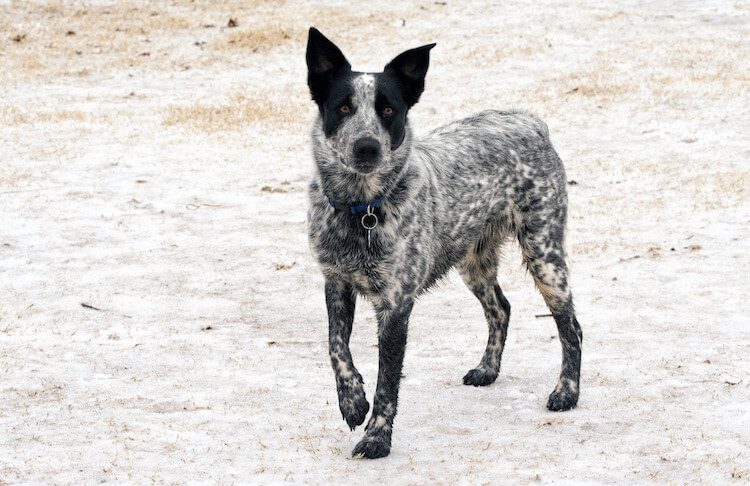
On the other hand, some Texas Heelers take after their Australian Shepherd parent and enjoy being touched, even on their paws, requiring less desensitization. Maintaining a consistent weekly grooming routine that includes brushing your dog’s fur and teeth is always a good idea. This practice promotes your Texas Heeler’s socialization and strengthens the bond between you and your furry friend.
Exercise and Mental Stimulation
As an energetic breed, Texas Heelers need plenty of exercise to keep them physically and mentally fit. Aim for at least an hour of vigorous daily activity, including walks, runs, and playtime in a secure yard. Mental stimulation is equally important for this intelligent breed. Incorporate puzzle toys, agility training, and obedience exercises to keep their minds sharp and prevent boredom.
Engaging activities will help keep your Texas Heeler happy and well-behaved. They also enjoy activities like fetch, frisbee, or even swimming, which can be fun ways to expend their energy. Allowing them to participate in herding activities or agility sports can also give them a sense of purpose and fulfillment.
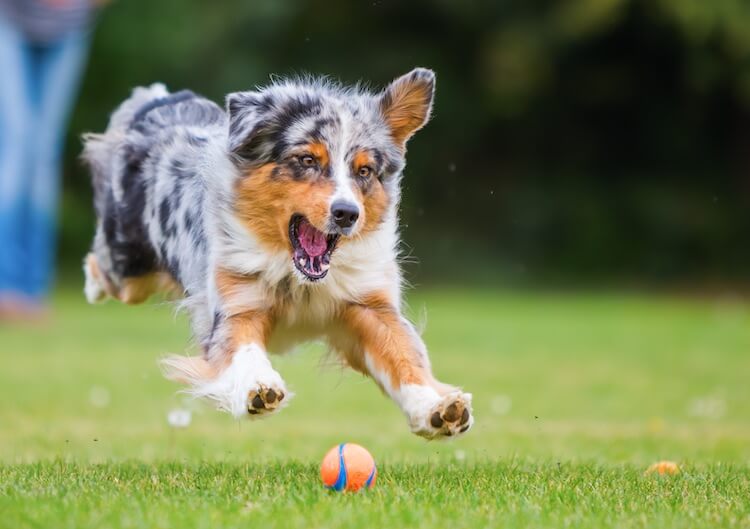
Texas Heelers, like their Australian Shepherd and Cattle Dog ancestors, are bred to work, so they don’t handle boredom well. Their greatest joy comes from running freely and having a purpose, which also happens to be the best form of exercise for them.
They thrive on the freedom to run across fields and forests, channelling their high-energy instincts through chasing and exploring. To stay healthy, Texas Heelers need 60 to 90 minutes of physical activity daily, ideally split into two walks.
Giving your Texas Heeler a task is essential, even if it’s as simple as teaching them new tricks! Teach them to fetch items or clean up their toys, which will be fun and rewarding.
Hiking is another enjoyable activity for these high-energy dogs. Families or individuals who can take their Texas Heeler on regular hikes will ensure a great quality of life and help prevent health issues associated with insufficient exercise.
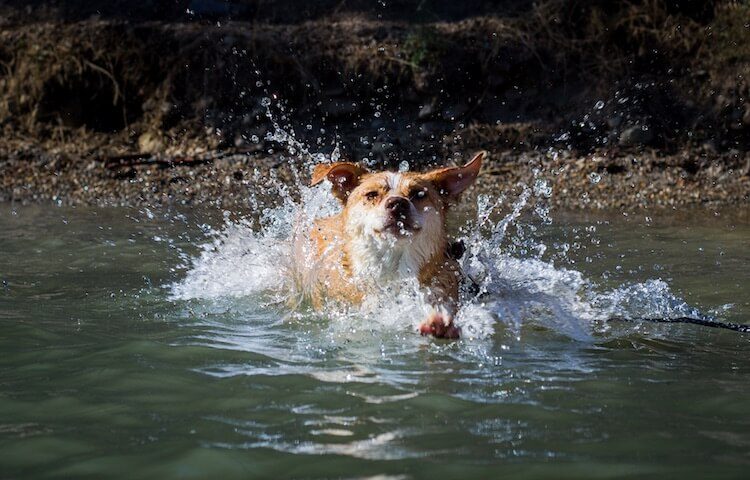
Socialization and Training
Early socialization is crucial for a Texas Heeler to grow into a well-rounded adult dog. Introduce them to different people, environments, and other animals to help them develop confidence and reduce wariness towards strangers. Training should start early and be consistent, as these dogs thrive on structure and direction. They respond well to positive reinforcement techniques like treats and praise, making training sessions enjoyable for you and your dog.
Patience is key, as these dogs may show stubbornness if they sense inconsistency in training. Regular training sessions will reinforce desired behaviors and help your dog understand expectations better.
Common Health Issues in Texas Heelers
While Texas Heelers are generally healthy dogs, like all breeds, they can be prone to certain health issues. Here are some common health concerns to watch out for in this breed:
Hip Dysplasia
Hip dysplasia, a common condition in medium and large breeds, occurs when the hip joint does not develop properly. Over time, this can lead to arthritis and mobility issues. Regular vet check-ups and maintaining a healthy weight through diet and exercise can help manage this condition.
Progressive Retinal Atrophy (PRA)
This hereditary eye disorder leads to progressive vision loss and eventual blindness. Regular eye exams and responsible breeding practices are essential to reduce the prevalence of this condition.
Deafness
Some Texas Heelers may be prone to congenital deafness, sometimes associated with merle-coated dogs. It’s important to conduct hearing tests early to understand and manage this condition effectively.
Collie Eye Anomaly (CEA)
This inherited eye condition can impair vision. While not always present in all Texas Heelers, it’s important to be aware of this possibility.
Hypothyroidism
Hypothyroidism is a condition where the thyroid gland doesn’t produce enough hormones, leading to symptoms like weight gain, lethargy, and coat changes. With proper diagnosis, it can be managed through medication and diet.
While these are common health issues, it’s important to remember that not every Texas Heeler will suffer from them. Regular veterinary check-ups, a balanced diet, exercise, and responsible breeding practices can help ensure your furry friend’s long and healthy life.
The Cost of Owning a Texas Heeler
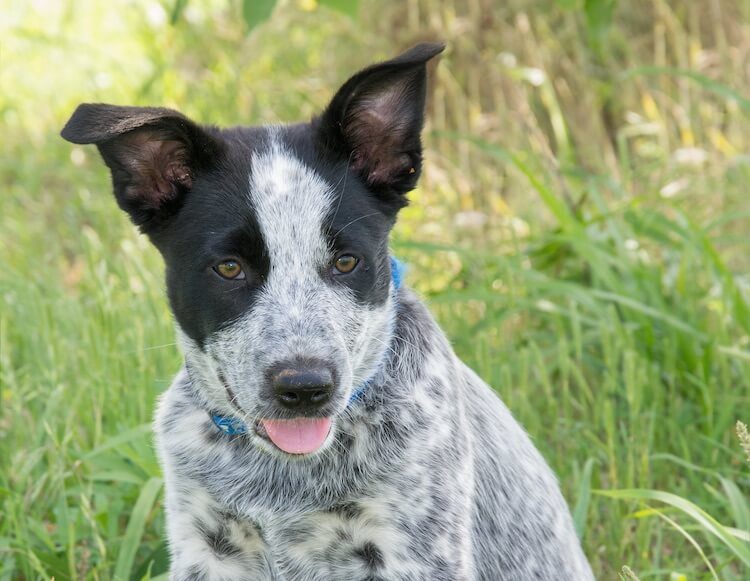
Initial Acquisition
The initial cost of acquiring a Texas Heeler can vary based on the breeder, location, and lineage of the puppy. Typically, you can expect to pay between $400 to $1,000 for a Texas Heeler puppy from a reputable breeder. It’s essential to consider additional initial expenses, such as spaying/neutering, vaccinations, and initial vet check-ups, which can add a few hundred dollars to the total cost.
Ongoing Care
Owning a Texas Heeler involves several ongoing expenses. These include:
- Food: A high-quality diet is crucial to keep your Texas Heeler healthy and energetic. Expect to spend around $30 to $50 monthly on quality dog food.
- Grooming: Due to their short coats, grooming costs are generally low for Texas Heelers. However, you may still need to budget for basic supplies like brushes, nail clippers, and shampoo, which can cost around $10 to $20 per month.
- Training: Investing in training classes or private lessons can help manage their energy and maintain good behavior. Expect to pay $100 to $300 for group classes and more for private lessons.
- Veterinary Care: Routine vet check-ups, vaccinations, and preventive care, such as flea and tick treatments and heartworm prevention, can cost around $200 to $500 annually.
Emergency Situations
Emergencies can happen, and it is important to prepare for unexpected expenses. Emergency veterinary care can be costly, with bills ranging from $500 to several thousand dollars, depending on the severity of the situation. Pet insurance is an option to consider, which typically costs between $30 and $50 per month and can help offset the financial burden of emergencies.
Owning a Texas Heeler includes initial expenses and ongoing costs for care, food, grooming, and emergencies. By budgeting appropriately, you can ensure a happy and healthy life for your Texas Heeler.
FAQs about Texas Heeler
Do Texas Heelers get along well with other pets?
Texas Heelers can get along well with other pets if they are socialized from a young age. Their herding instincts might initially cause them to chase smaller animals, but they can learn to coexist peacefully with proper training and supervision. It’s essential to gradually introduce them to other pets and ensure they understand boundaries. Early training will also help them differentiate between playful interactions and actual herding behavior. Supervision during initial interactions is key to ensuring harmony among pets.
Are Texas Heelers good apartment dogs?
Due to their high energy levels and herding instincts, Texas Heelers are best suited for homes with ample space. However, they can adapt to apartment living with sufficient exercise and mental stimulation. Owners need to commit to providing daily physical activities such as long walks, runs, or trips to the dog park. Mental stimulation, through training or interactive toys, is equally crucial to prevent boredom and destructive behavior. Apartments with nearby outdoor spaces or parks will make this transition easier.
Do Texas Heelers bark a lot?
Texas Heelers have a moderate to high tendency to bark, especially if they sense something unusual or want to communicate. This behavior can be managed through training, ensuring they understand when barking is appropriate. Early socialization and exposure to various environments can reduce excessive barking from unfamiliar situations. Providing enough physical and mental stimulation also helps minimize boredom-induced barking. They thrive when given tasks or challenges, keeping them focused and reducing unnecessary barking.
How much grooming does a Texas Heeler need?
Texas Heelers have a relatively low-maintenance coat, usually requiring weekly brushing to keep it in good condition. The shedding levels vary based on whether they inherited the longer Australian Shepherd or the shorter Cattle Dog coat. Bathing is only necessary when they get dirty, typically every few months. Routine grooming tasks like nail trimming, ear cleaning, and dental care are also essential to their overall health. Regular grooming maintains their appearance and helps detect any health issues early.
How long can Texas Heelers be left alone?
Texas Heelers prefer not to be left alone for long periods due to their strong attachment to their owners. Prolonged solitude can lead to separation anxiety and destructive behavior as they seek outlets for their energy. It is best to limit alone time to a few hours and provide engaging toys or activities to keep them occupied. If owners need to be away longer, arranging for a dog sitter or taking them to a doggy daycare can be beneficial. Proper training can also help them become more comfortable alone for short durations.
So, Is the Texas Heeler Right for You?
The Texas Heeler is a dynamic and intelligent breed that can be a wonderful companion for the right family or individual. With their high energy, intelligence, and loyalty, they thrive in environments where they have plenty of room to run, play, and engage in stimulating activities. However, this breed also comes with specific needs and personality traits that may not be suitable for every household.
Texas Heelers Are For:
- Active families or individuals who enjoy outdoor activities and can provide ample exercise
- People experienced in training and socializing energetic breeds
- Homes with spacious yards or access to outdoor spaces where they can run and play
- Owners who are looking for a loyal and protective companion
- Households that have the time and resources for consistent grooming and veterinary care
Texas Heelers Are NOT For:
- Families or individuals with limited time for exercise and mental stimulation
- Apartment dwellers who cannot commit to extensive daily physical activity
- Owners seeking a low-energy or low-maintenance breed
- People who are not prepared to handle their herding instincts and potential stubbornness
- Households that have little experience with training or managing energetic breeds
The decision to bring a Texas Heeler into your life should be made carefully considering their unique needs and characteristics. While they can be incredibly rewarding companions for the right owner, they require dedication, patience, and a commitment to meeting their physical and mental needs. With proper training, socialization, and care, Texas Heelers can thrive in loving homes where they are valued for their intelligence, loyalty, and boundless energy.
However, it’s important to recognize that they may not be the right fit for every household. Ultimately, if you have the time, space, and willingness to provide for the needs of a Texas Heeler, you may find yourself with a devoted and adventurous companion for years to come.


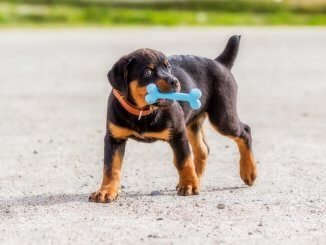
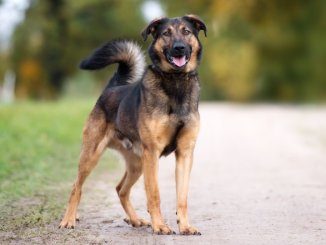
I’m in complete love with my Texas heeler. Oh yes! It’s often said “Who saved Who?” I truly know the correct reply to that question. Loyal , protective, intelligent, sensitive to my quirks, and won’t ever let me feel down. She’s just a wonderful companion and the sloppy dog kisses… can’t get enough of them. If I didn’t know better, I would say she’s human. An absolute gift of tremendous love and I really needed her.
Our Australian cattle dog Missy is the sweetest and most lovely dog. She has to be with me every moment of the day. We go to the dog park two times a day and my husband walks her in morning. Missy is very intelligent and a real family dog that wants to be with us all time. She is most loveable dog I ever had!
I had a heeler and an aussie. Loved both, but know the heeler is more of a one person dog.
When my Heeler is sitting in my lap the wife will come up to love on her and she will snap at her. We got her at 3 1/2 years old from the pound, what can we do?
How is the relationship between your dog and your wife at other times? Does your dog spend more time with you? Do they do anything together? It would be essential to prevent the opportunity for this to happen. So, whether you no longer have the Heeler on your lap, or if you do, your wife doesn’t interfere. Separate to this, it would appear that your wife and the Heeler need to spend more time having positive interactions together. So, can your wife try training some new tricks/commands, or play for 10 minutes each day? Building their relationship is essential. If she was from the pound, we are unsure of her experiences and how easily she learns to trust. Focus on positive reinforcement and reward based training and don’t put either of them in the position where your Heeler feels she needs to snap. If things worsen then please seek the advice of a force-free trainer in your area.
We adopted out Texas Heeler, Dixie, as a puppy. She is an absolute gem. She has 5 acres to roam and loves to heed our horses and neighbors cattle. She is the sweetest most loyal dog we’ve ever had. She is wonderful with our 6 year old daughter and has been nothing but sweet and gentle with her. She’s protective but not aggressive. Dixie is also exceptionally loving and kind to our Senior Labrador. Love this breed and she will always be a special member of our family.
Our dog was a pup when rescued by an Australian Shepherd Rescue program. Her name is Flint. She is so sweet. Her “sister” is Steel and was rescued from a shelter at six years old. She may be a Texas Heeler as we adopted her in New Mexico. She is darling and had been the shelter’s temperament dog for compatibility testing. They are people oriented and great with kids over 8. We love them both dearly, along with our cat, Spark.
Bought our Texas heeler for $100. She’s a dork, but we love her, would recommend for families or just as a companion, beware of shedding though.
How bad do they shed? I’m interested in adopting one of these pups.
Our Texas Heeler, Bucket, is the sweetest dog! He loves to exercise and have fun, but is the sweetest little cuddler. He is very smart and was easy to train. We love this guy so much!
I rescued a Texas Heeler back in July… I had to put her down Thursday due to cancer…. I only had her for 5 months but she was the best dog that I have ever had…. She was my heart dog…. She was very loyal…. followed me everywhere…. I never needed a leash for her because she never left my side even if other dogs were around… she was a VERY NON reactive dog… She was very tolerant and would let you do anything…. She never barked… She liked people but would never approach them first… She would eat ANYTHING… I never knew how much of the world was edible until I met her… LOL…. She was very stoic and she NEVER let me know that she was sick…. I had to pay VERY close attention to her…. I found out Saturday Dec 5 that she had cancer… She went down hill FAST so on Dec 9 I decided she had had enough and made an appointment for home hospice the next day… Even the day that she went down she stayed strong… I absolutely LOVE this breed and will be looking for another…. She had the Aussie Shep temperament with the floppy ears and tail… I love her… If you are looking for a wonderful dog… consider a Texas Heeler
im waiting for my texas heeler to grow a little. she is only 2 wks old. i have only seen pictures of her but i am already in love.
My daughter and family of two young boys adopted a Texas heeler a few years ago. He is great with the kids, my husband, myself and son (people he met the first few days of adoption). He is reactive to everyone else. He has bit or tried to bite people–even those he has been introduced to for months. Friends cannot come into the house without the dog being in place or crated. My daughter and her husband have spent a lot of $$ and time in training; the dog is VERY smart, trainable — but still unpredictable. The dog is on Prozac. We have now had the dog for 3-4 months while my daughter’s family is out of state. He gets along well with our two pit bulls, but can be reactive to other dogs. He gets daily walks but I cannot let him off leash due to his unpredictable behavior. My daughter now has a baby girl and we all are concerned about the baby’s well being when they return. We all agree the dog needs to be rehomed — but with his biting behavior, who would take him on? Any advice would be greatly appreciated. This dog is extremely loyal to those he accepts as his clan. We might consider keeping him with us, but that just moves the problem into our household.
Texas herlers are by far one of the best mixed breeds I’ve had.
My Cali lived just shy of 17 years. She was good with other dogs and even cats and kids. She was a very loyal and loving dog. I miss her dearly.
I have a small red heeler I’m considering breeding to a small Aussie
It’s a possibility but I’m really picky about who would get one besides me. I may even adopt instead.
We love our Luna aka LU
She is the best fur human LOL to ever come into our lives! She is loyal and SUPER smart!
Protective of children the grandchildren love her and she gets extremely excited to see them!
She loves water, her fur squeaky toys, and being with her family.
She loves car rides and ribeyes with sweet potatoes lol she is out spoiled girl!! ♥️ I would have a 100 of this breed before any other
We had a Texas Healer from late 90s to 2015. A great disc dog, I sucked as a handler. Thor was the best.
I have a cattle dog I got as a rescue 6 weeks ago. A very scared shy girl that is coming out of her shell but what amazes me the most with her is I have a cockatiel bird that raven (the dog) is so polite with the bird she won’t stare at coco (the bird) she’ll turn her head away from the bird and never steps with in 2 feet of him who is making the bird feel safe with her
Coco sees that she has no reaction to him so he’s getting closer and closer to her. I’m sure in know time he’ll be riding her. She’s just so well mannered and I never thought I could love a dog so much so fast she rules the house a d that’s fine with me
I have both. Heeler and Texas Heeler we just got love them both ! I’ve grown up w Heeler a and couldn’t wait to get another one when me and my husband got our own house . Smartest most loyal dogs ever Foxie is our red Texas ans. Butch is our make Blue Heeler !
This is exactly my heeler and me! She came as a complete surprise! Most intelligent fur baby I have ever had. I am her human! I was in a very hurtful state of mind and heart..
She rescued me. I thank God for her and her previous owners. She was gifted to me..
We adopted our Texas heeler Roxanne after years of owning corgis and shelties. She is a joy. I call her Farm Doggie and wish we had a farm for her, though she seems happy in our suburban home, supervising the corgis, patrolling the town with my daughter, keeping the bunnies out of the backyard and making sure I sleep safely in my bed at night. She is probably the most elegantly beautiful dog we have ever owned, too.
I will just have to be happy with what I get, you really can’t be ttooooo chooses I just want it healthy and a blue heeler àmd 4 lethe thtrooegs dotrme safety!!!! And the the rest of the of troops